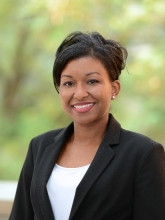CEE Seminar: Applications of an Air Quality Model Sensitivity Tool for Source Characterization and Environmental Justice Analyses

Assistant Professor
Chemical and Environmental Engineering
UC Riverside
Abstract: Globally, human exposure to air pollution is a known risk factor for increased morbidity and mortality, and its chemical composition can vary significantly by region and season. Variabilities are largely driven by topography, meteorology, land cover and human activities. State-of-the-science air quality modeling systems, such as the U.S. EPA’s Community Multiscale Air Quality (CMAQ) model, parameterize or directly resolve many important land-atmosphere interactions. CMAQ’s direct sensitivity tool enables the investigation of the model response to emissions or boundary conditions. Model sensitivity studies are useful for estimating the impacts of specific pollution sources and provide insight for the development of mitigation strategies. I will discuss past and present applications of a sensitivity approach to investigate regional source variability over the continental U.S. and to investigate local air pollution challenges in Salt Lake City, Utah, and inland Southern California. Conclusions drawn from these studies have led to successive public health and environmental justice analyses.
Bio: Cesunica (Sunni) Ivey is an assistant professor of chemical and environmental engineering at UC Riverside. She is a principal investigator at the Bourns College of Engineering Center for Environmental Research and Technology, and she is an affiliate faculty member of the UCR Center of Geospatial Sciences and the UCR School of Medicine BREATHE Center. She earned her doctorate in environmental engineering from the Georgia Institute of Technology in 2016. She is former postdoctoral researcher in the Department of Physics at the University of Nevada, Reno and also served as a visiting scientist at NOAA’s Geophysical Fluid Dynamics Laboratory before joining UC Riverside in summer of 2018. Her research interests include source apportionment of fine particulate matter, regional air quality modeling for health applications, global atmospheric modeling and environmental justice. Her group seeks to understand fine-scale spatial and temporal variability in air pollution exposure of residents of inland Southern California. Her group uses both field and modeling approaches to answer questions related to high-risk microenvironmental exposure and environmental injustices.
Share
Upcoming Events
-
MSE 298 Seminar: Translational Neuroelectronics
-
CBE Seminar: Water Structure and Computational Design of Water-mediated Solute-surface Interactions
-
CEE Ph.D. Defense Announcement: Ultra-High-Ductility and High-Strength Cementitious Materials for Advanced Manufacturing of Structures
-
CALIT2 Distinguished Lecture: Strategic Directions for Electronics Packaging
-
MSE 298 Seminar: Science-Based Advanced Manufacturing of Metals and Alloys
